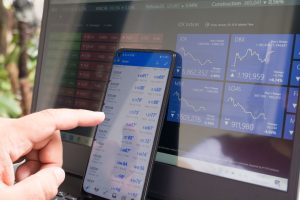The foreign exchange market, or forex, is the largest and most liquid financial market in the world. It is a decentralized market where currencies are traded 24 hours a day, five days a week. Forex trading involves buying and selling currencies with the aim of making a profit from the fluctuations in their exchange rates. In order to be successful in forex trading, it is essential to understand the concept of supply and demand, which is the backbone of price action analysis.
Supply and demand are the fundamental forces that drive the price of any asset, including currencies. In simple terms, supply refers to the amount of an asset available for sale, while demand refers to the amount of an asset that buyers are willing to purchase at a particular price. When supply exceeds demand, prices tend to fall, and when demand exceeds supply, prices tend to rise.
In forex trading, supply and demand are determined by the buyers and sellers in the market. The supply of a currency is determined by the sellers who are willing to sell their currency at a particular price. The demand for a currency is determined by the buyers who are willing to buy the currency at a particular price.
Identifying supply and demand in forex trading is crucial for making profitable trades. Here are some ways to identify supply and demand in forex trading:
1. Identify key price levels: Key price levels are areas on the price chart where price has previously reversed or consolidated. These levels can act as areas of supply or demand, depending on whether price reversed at the level or consolidated before continuing in the same direction. Key price levels can be identified using technical analysis tools such as support and resistance levels, trend lines, and Fibonacci retracements.
2. Look for price spikes: Price spikes occur when there is sudden and significant buying or selling pressure in the market. These spikes can indicate areas of supply or demand, depending on whether price spiked up or down. Price spikes can be identified using candlestick charts or by looking for large price bars on a price chart.
3. Analyze volume: Volume is the amount of trading activity in the market. High volume can indicate areas of supply or demand, depending on whether there is high selling or buying pressure. Volume can be analyzed using volume indicators such as the on-balance volume (OBV) indicator or the volume-weighted average price (VWAP) indicator.
4. Use price action patterns: Price action patterns are formations on the price chart that indicate a potential reversal or continuation in price. These patterns can be used to identify areas of supply or demand. Examples of price action patterns include head and shoulders, double top or bottom, and bullish or bearish engulfing patterns.
5. Monitor news events: News events can impact the supply and demand of currencies. Positive news can increase demand, while negative news can decrease demand. Monitoring news events can help traders identify potential areas of supply or demand.
In conclusion, identifying supply and demand is essential for successful forex trading. By identifying key price levels, looking for price spikes, analyzing volume, using price action patterns, and monitoring news events, traders can identify areas of supply and demand in the market. This knowledge can be used to make profitable trades by buying at areas of demand and selling at areas of supply.






